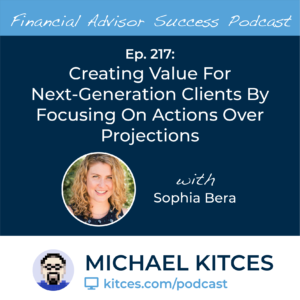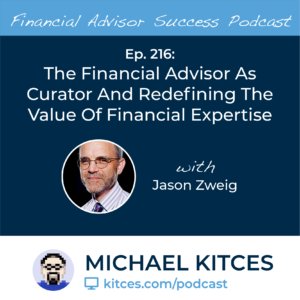An often underappreciated aspect of the financial planning process (and the resulting Plan that financial planning software packages produce) is that it wasn’t originally developed as part of fostering an ongoing client/advisor relationship. Rather, it was a tool that advisors would use to identify “gaps” or “needs” in someone’s overall financial picture… in order to then sell them something to fill that gap! Which, in turn, is why many financial planning software packages are still structured in such a way as to produce moment-in-time snapshots... and why some advisors have turned to other types of client deliverables, such as one-page financial plans and action checklists, as a means to engage clients in an ongoing planning process.
Yet, while there’s a broader recognition that planning isn’t a one-and-done event, the issue remains that clients can often see tremendous progress in the initial stages of working with an advisor, but may end out wondering what value they’re getting on an ongoing basis. Which raises the question: how can advisors create (and more importantly demonstrate) value for their clients... if they aren’t producing a new Financial Plan every year or few?
In our 54th episode of Kitces & Carl, Michael Kitces and financial advisor communication expert Carl Richards discuss the most important factor to consider when thinking about creating ongoing value for clients, strategies advisors can use to actually demonstrate that ongoing value, and how to avoid a common challenge when creating a “value structure”.
As a starting point, it’s important to recognize that the most important aspect of demonstrating ongoing value to clients is consistency. For instance, some advisors adhere to an outreach and meeting cadence throughout the year to make sure that there are (depending on the nature and complexity of the relationship) a certain number of in-depth meetings and touch-points. Others even systematize the process even further by creating (and sharing) checklists of regularly performed tasks and client service calendars in order to actively communicate to clients that their advisor is routinely paying attention to all the big picture (as well as mundane) things on their financial plates (so they don’t have to!)
Meanwhile, some advisors have implemented more “homegrown” solutions to actually track the value that they create for their clients. Some examples include “keeping score”, whereby advisors assign point values to all the various pieces of the financial planning process and tally a score to show clients the progress that they’ve made. Because while advisors do a lot of behind-the-scenes things for their clients, they often underestimate how important it is to actually communicate to clients all those things that they actually do already! Other advisors prefer to track a client’s net worth over time (even having the client themselves enter the number themselves into a spreadsheet to further emphasize progress and ownership), or even keep a running tally of the real dollar value of the money that clients have saved as a result of the advice they’ve received, either of which shows the client the actual progress they’re making on an ongoing basis in real (but non-portfolio) dollar terms.
Ultimately, there are a lot of things that advisors do for their clients to create value beyond ‘just’ producing a five-inch three-ring binder called The Plan once every few years. The key, however, is in being consistent, not only about the doing part, but systematically showing to clients that all the different pieces of their financial puzzle are regularly taken care of. Yet at the same time, it’s important not to get so focused on their systematic process that the advisor may miss uncovering a new issue or pain point. Which can be avoided by asking their clients ahead of meetings if there’s anything that they would like to cover in the upcoming meeting that isn’t already on the agenda... and then making that the very first thing they talk about. Because at the end of the day, the most effective way to demonstrate ongoing value to clients is simply to be ready and prepared to address their ongoing financial planning needs and concerns, whatever may arise!

 Welcome back to the 217th episode of the Financial Advisor Success Podcast!
Welcome back to the 217th episode of the Financial Advisor Success Podcast! Welcome back to the 216th episode of the Financial Advisor Success Podcast!
Welcome back to the 216th episode of the Financial Advisor Success Podcast!
